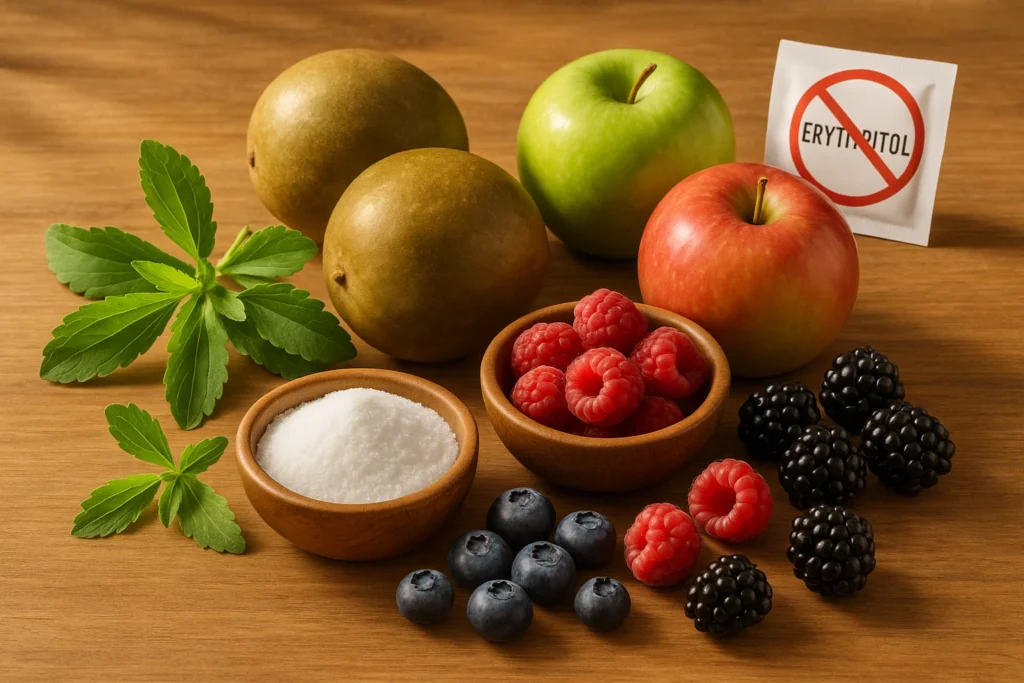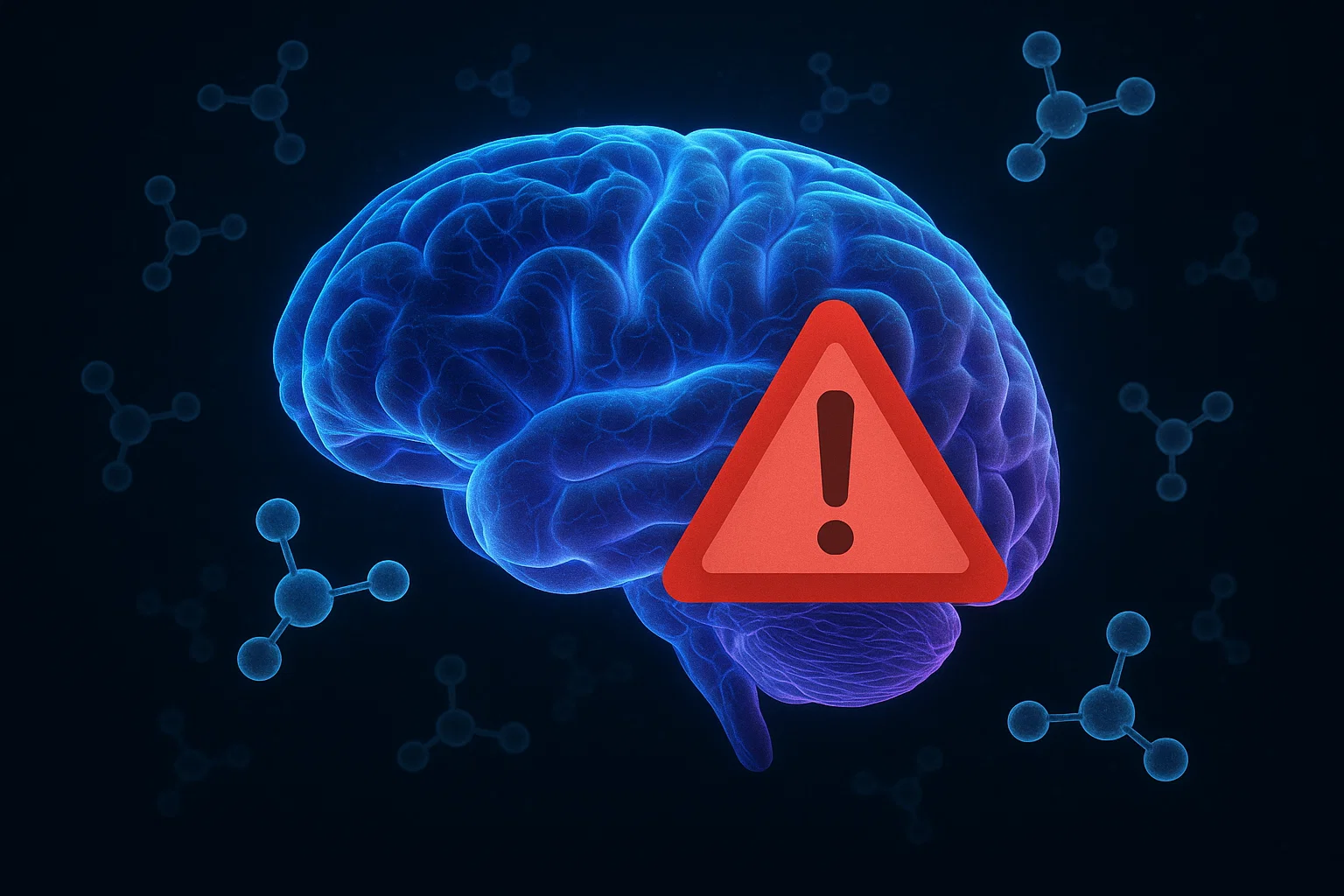Use of sugar free drinks and sweets is the order of the day among people interested in lowering calorie intake, yet with a sweet taste. Erythritol is one of the most commonly used sugar replacers and happens to be a naturally derived polyol, which possesses approximately all the sweetness of natural sugar, with very low calories. Endorsed by the FDA in 2001 and praised due to its slight impact on blood sugar levels, erythritol has entered the healthy life of cookies, cakes, carbonated beverages, etc.
But recent experimental studies indicate that normal intake of erythritol may harbor unforeseen threats, and especially on the well-being of small blood vessels in the brain.
What is Erythritol?
Erythritol is a sugar alcohol used as a non-nutritive sweetener, meaning it provides sweetness without significant calories. It’s naturally present in small amounts in fruits and vegetables but is commercially produced for use in food and drinks. Unlike other sweeteners, erythritol is not metabolized by the body and is excreted unchanged, which has long been touted as a benefit. However, emerging research suggests that even this “safe” sweetener may have hidden risks, particularly for brain and cardiovascular health.
What the Study Found
A Berry et al. (2025) group exposed human brain microvascular endothelial cells (hCMECs) to the concentration of erythritol that a person is likely to ingest in one can of a common artificially sweetened drink (6mM, or approximately 30g) in 24 hours.
Among their most crucial findings there are:
Enhanced Oxidative Stress: Erythritol treatment increased the intracellular reactive oxygen species (ROS) level by approximately 75% even though there was a compensatory upregulation of antioxidant enzymes superoxide dismutase-1 and catalase. This disproportion is a sign of too much oxidative stress on cells
That Is, a 35% decrease in activating phosphorylation of eNOS at Ser1177 and a 40 percent increase in inhibitory phosphorylation of eNOS at Thr495 occurred despite no change in total nitric oxide synthase (eNOS) levels. As a result, release of NO the essential vasodilator which preserves blood flow in the brain, declined by about 20 percent.
High Endothelin 1 (ET 1): The pro-hormone (Big ET 1) levels rose by more than 35% which results in the massive increases of ET 1 which is among the strongest vasoconstrictors. Increased activity of ET-1 may cause constriction of the blood vessels and stall the flow of blood.
Reduced Fibrinolysis: Defective degradation of clots takes place due to an impaired production of tissue-type plasminogen activator (t-PA) in the brain endothelial cells. The release of t‑PA in response to thrombin after treatment with erythritol was impaired, which implies an impaired mechanism of clearing clots, as well as an inability to preserve vessel patency.
Taken together, these alterations can be characterised as an alteration of an anti-thrombotic endothelial phenotype with a pro-constrictive, pro-thrombotic and less integrity of blood-brain barrier, which characterises the cerebrovascular endothelial dysfunction.
Why This Matters for Stroke Risk
Endothelial cells that cover blood vessels are regulating the following functions:
Vessel Dilation: Resulted by the mediation of NO, bringing about free flow of blood.
Vessel Constriction: ET-1 counterbalances to weaken blood pressure.
Clot Removal: Caused by t-PA in order to avoid harmful clots.
Oxidative Balance: Regulated through antioxidant enzymes in an effort to safeguard cell integrity.
Any disturbance of these microvascular processes in the brain has the ability to initiate or aggravate the ischemic type of stroke, which is the most frequent type of stroke that is brought on by vessel occlusion. ROS, overabundance of which ruins cell structures and the blood-brain barrier, decreasing NO contributes to the deleterious vessel tension, excess ET-1 advances said tension, and damaged t-PA delivery prevents the clearing of clots. Although epidemiological studies had previously attributed cardiovascular and cerebrovascular events to elevated levels of circulating erythritol, the study of Berry et al. contains a rapid explanation of the effect at the cellular level
Weighing of benefits and risks
The main attraction to erythritol is that it has minimal glycemic response, and few calories, and is a favorite among people, with either diabetes, their weight, or metabolic syndrome. However, new evidence presses on a reconsideration of its common application:
The Secret to Moderation: If you like sugar-free drinks or foods, then you can use frequency and amount.
Various Sweetener Options: Switch among various non nutritive sweeteners (i.e. stevia, monk fruit) and minimize chronic exposure to a single compound.
Whole-Foods Mindset: Make an emphasis on the naturally low-sugar whole foods, such as fruits, vegetables, and whole grains, so that the use of the artificial sweeteners could be minimized.

The bigger Picture: Artificial Sweeteners Under Scrutiny
This is one more research that throws a doubt on the safety of artificial sweeteners. Although erythritol has previously been thought of as a harmless substitute to sugar, its capability to influence vascular health is a cause of concern. Other research works have implicated erythritol in causing heart diseases and this implies that the effects of erythritol are not confined in the brain but they encompass the whole cardiovascular system.
As consumers, we need to be informed of what we eat. This issue is also an interesting point to note because the sweetness of a substance which is supposedly calorie-free could prove to be costly in the long-run in that more studies should be conducted to study the effects of erythritol alongside other non-nutritive sweeteners.
Conclusion
The study by Berry et al. reveals that erythritol could also have a negative effect on brain microvascular endothelial cells, at least, due to its ability to increase oxidative stress, compromise antioxidant defense mechanisms, and adversely affect a vascular function. The results indicate the necessity to be cautious with the consumption of erythritol-containing products, in spite of their need to be further studied to establish the same effects in humans. At least, a better choice would be whole foods and a reduction in artificial sweeteners until scientists come up with conclusive findings on their effects on human health.
Remain curious about what lies in your food and make decisions in ways that promotes your longevity. In case you have worries concerning erythritol or other sweeteners, your nutritionist or doctor may give you individual advice.
Reference:
Berry, A. R., et al. (2024). The non-nutritive sweetener erythritol adversely affects brain microvascular endothelial cell function. Journal of Applied Physiology.

